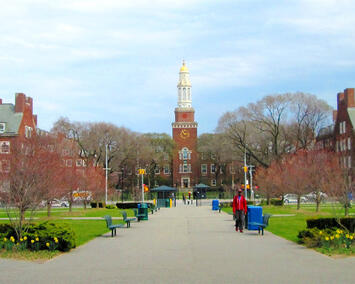
American mythology promises upward mobility, and college can provide an important first step up the class ladder. With the rise of the “knowledge economy” and the decline of industrial jobs and unions, some insisted that education is the answer to economic displacement. If you can’t earn a stable, living wage as a steelworker, go to college and become a nurse or a computer programmer. And if you didn’t make that choice, it’s your own fault that you’re struggling. After all, college was affordable, accessible, and varied. You could commute to campus, take evening classes, cover tuition with loans and grants, and work part-time or even full-time while you completed the degree that would transform your life.
Of course, higher ed doesn’t quite live up to this vision, especially in recent decades. Rising tuition, largely due to drastic declines in public funding for higher education, has made college less affordable, while precarious employment and uncertain job hours make juggling work and school difficult. The Hope Center for College, Community, and Justice has documented many of the economic obstacles students face today, especially food insecurity and homelessness.
The pandemic has exacerbated these challenges, as enrollment figures make clear. Data from the National Student Clearinghouse Research Center shows a 14.8% drop at community colleges, and a 10.8% decline at private for-profit schools. While the 4% decline at four-year public schools was less dramatic, it’s easy to imagine why students would have quit school during the pandemic. Many weren’t interested in online classes, or they didn’t have the necessary equipment, internet bandwidth, or digital experience. Others couldn’t afford tuition because of lost income. For many, family responsibilities got in the way. About a third of college students provide care to family members, either children or elders, and the combination of health concerns and the lack of child care or home health care likely drove many students away. Those problems will get worse now that the Child Tax Credit is ending. These declines could well limit people’s earning power and employment opportunities down the line, undermining the economic well-being of millions of working-class Americans.
Declining enrollment doesn’t only affect those who leave college. It changes what colleges and universities offer to those who remain. Dozens of campuses across the country have cut programs and fired faculty over the last two years. A list compiled by the office of the President of Eastern Michigan University, in part to buttress its announcements of staff cuts, includes several dozen examples from between April, 2020 to July, 2021. More cuts have been announced in the last six months. Some were temporary, such as short-term furloughs or stopped contributions to retirement accounts. Elsewhere, programs have been closed, salaries decreased, and vacancies left unfilled.
Last February, the Chronicle of Higher Education reported that 650,000 faculty and staff had lost their jobs, and the tally is probably much higher now. Just this fall, Youngstown State University, where Working-Class Studies and Working-Class Perspectives began, “sunsetted” 26 programs and retrenched 9 tenure-line faculty. That included two endowed chairs who led programs in Islamic Studies and Judaic and Holocaust Studies. Their retrenchment drew protests from the community groups that funded their positions and the American Historical Association. These cuts follow voluntary retirements of 24 faculty as part of an incentive program the previous year and non-renewal of contracts for others who were not yet tenured. More cuts are expected this spring, including in non-tenure line positions. Of course, YSU isn’t alone. The University of Vermont cut 25 programs, William Paterson University plans to lay off 100 faculty, and a number of universities have reorganized departments and schools.
While the pandemic caused real trouble for higher ed budgets, which rely not only on tuition but also on room and board and per student state funding calculations, these cuts reflect more than just budget woes. Rather, just as in some commercial businesses, as John Russo noted here a few weeks ago, the pandemic has provided an opportunity for institutional leaders to take actions they could only get away with by citing austerity, efficiency, and restructuring. As an academic and activist, I am, of course, concerned about what this means for tenure and academic freedom, but I am even more concerned about what it means for students.
Read the Rest of this piece at Working Class Perspectives.
Sherry Linkon co-directed the Center for Working-Class Studies at Youngstown State University for more than a decade. She is a professor of English at Georgetown University, where she directs the American Studies Program and the Writing Program. She is also a faculty affiliate at the Kalmanovitz Initiative for Labor and the Working Poor.
Photo: Brooklyn College via Wikimedia under CC 4.0 License.












